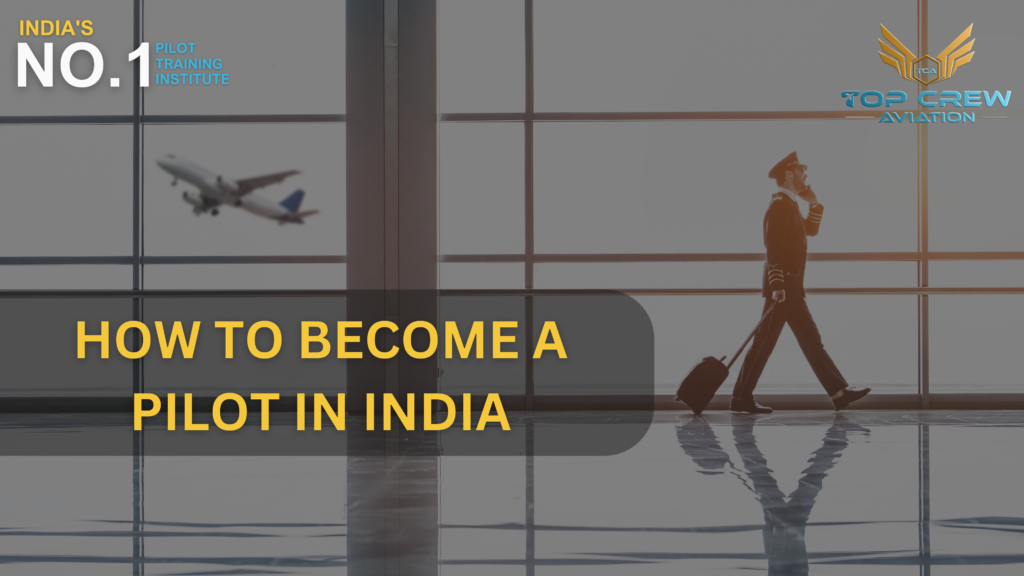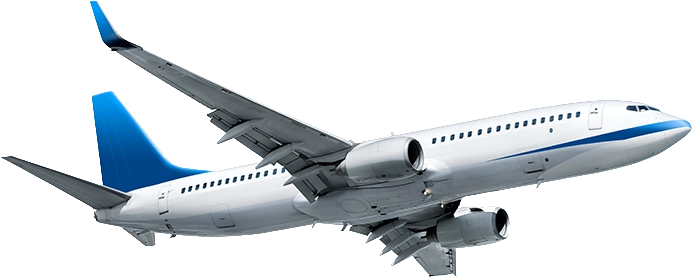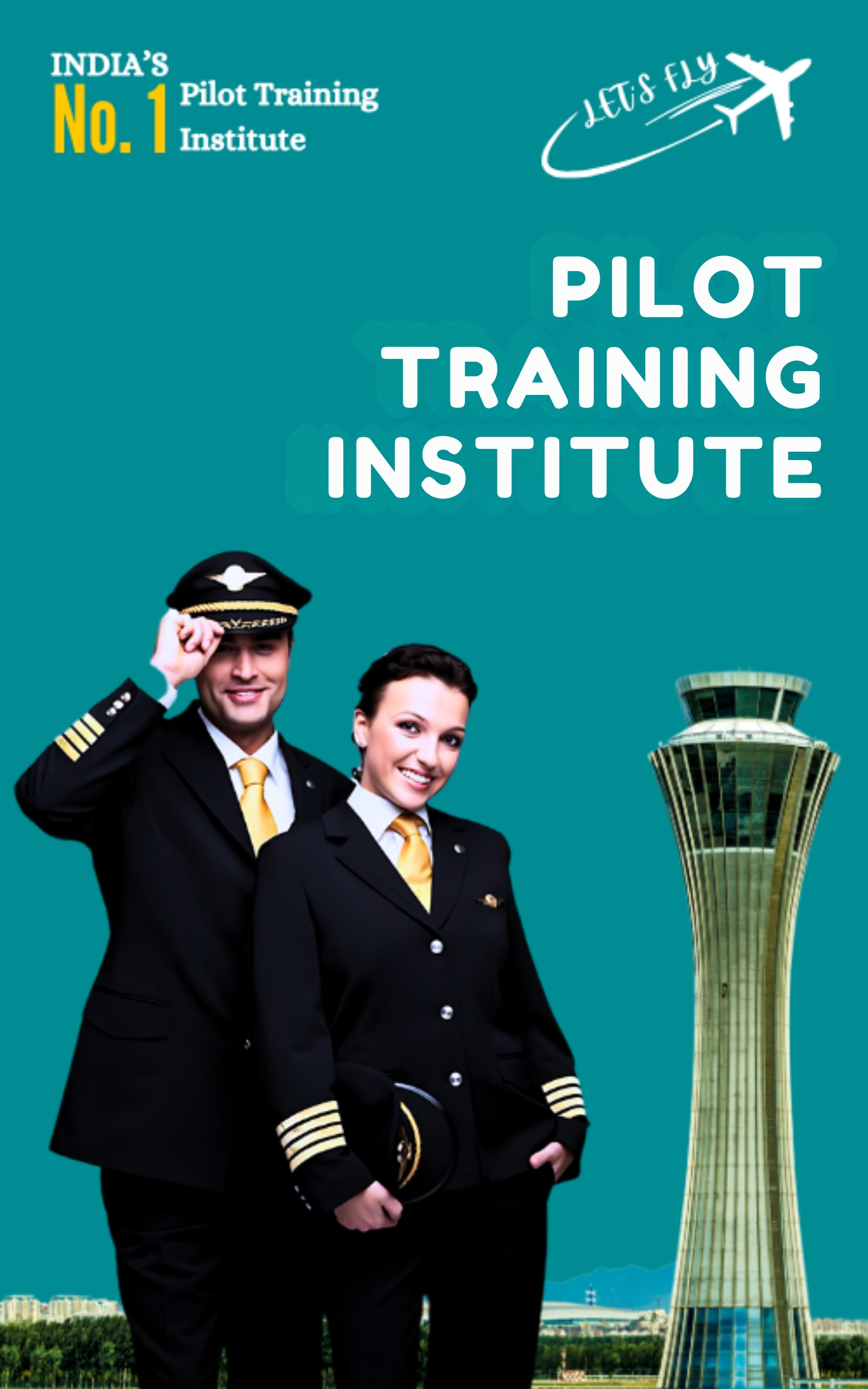How to Become a Pilot in India
Have you ever dreamed of soaring through the skies, commanding a powerful commercial aircraft, and exploring the world from the sky?
Becoming a pilot in India can turn that dream into reality. But the journey to the cockpit is not just about the thrill—it’s a path filled with challenges, dedication, hard work, and incredible rewards.
From the rigorous ground training to the exhilarating first solo flight, the road to becoming a pilot in India is as exciting as it is demanding. Whether you aspire to fly commercial airliners, join any charter company, or navigate private jets, understanding the steps to achieve your goal is crucial. In this guide, we will navigate through the essential requirements, pilot career paths, and training processes that will help you spread your wings and take flight in the Indian aviation industry. So fasten your seatbelt as we prepare for takeoff into the world of Indian aviation and explore how you can turn your pilot dreams into a high-flying career!
Understand the Requirements to Become a Pilot
To become a pilot in India, it’s crucial to understand the requirements first. These encompass age, education, physical fitness, and language proficiency.
Age and Educational Qualifications
The minimum age to start pilot training in India is 17 years, while the maximum age limit varies depending on the airline or organization. Most require candidates to be under 40 years old. Educational qualifications typically include:
- 10+2 with Physics and Mathematics
- For others (Physics and Math from NIOS is the option)
Physical and medical standards
Aspiring pilots must meet strict physical and medical standards to ensure they can safely operate aircraft. Key requirements include:
| Requirement | Standard |
| Vision | 6/6 with or without glasses |
| Height | Minimum 152.5 cm (60 inches) (As per DGCA there are no height requirements) |
| Weight | Proportionate to height |
| Medical Class | DGCA Class 2 and 1 Medical Certificate |
A Class I Medical Certificate from a DGCA-approved medical center is mandatory. This involves comprehensive health checks, including cardiovascular, respiratory, and neurological assessments.
Language Proficiency
Effective communication is vital in aviation. Pilots must demonstrate:
- Fluency in English (both spoken and written)
- Ability to understand and respond to air traffic control instructions
- Clear pronunciation and comprehension
The International Civil Aviation Organization (ICAO) Language Proficiency Requirements must be met, with a minimum Level 4 (Operational) on the ICAO Language Proficiency Rating Scale.
With these requirements in mind, aspiring pilots can now focus on choosing their specific career path within the aviation industry.
Choose Your Pilot Career Path
When embarking on your journey to become a pilot in India, deciding which career path aligns best with your goals and aspirations is crucial. Let’s explore the three main options available:
Commercial Pilot
Commercial pilots are the backbone of the aviation industry, flying passengers and cargo for airlines. This career path offers:
- High earning potential
- Opportunities for international travel
- Advanced technology and aircraft exposure
Military Pilot
Joining the Indian Air Force as a pilot provides a unique and challenging career:
- Serve your country
- Fly cutting-edge military aircraft
- Extensive training and skill development
Private Pilot
Private pilots fly for personal or business reasons, not for hire. This path offers:
- Flexibility in flying schedules
- Lower initial training costs
- Potential for recreational flying
| Career Path | Pros | Cons |
| Commercial Pilot | High salary, travel opportunities | Demanding schedules, time away from home |
| Military Pilot | Prestigious career, advanced training | Long service commitments, high-stress job |
| Private Pilot | Flexible schedule, lower initial costs | Limited earning potential as a career |
Choosing the right path depends on various factors:
- Personal interests and goals
- Physical fitness and medical requirements
- Time and financial investment capabilities
- Long-term career aspirations
Consider these aspects carefully before making your decision. Each path has unique challenges and rewards, so align your choice with your passion for flying and career objectives.
Now as you have explored the different pilot career paths, Let’s move on to the crucial step of obtaining the licenses you need to take your chosen path.
Obtain the Necessary Licenses:-
To become a pilot in India, you must acquire a series of licenses that demonstrate your skills and knowledge. Each license represents a crucial step in your aviation career.
Student Pilot License (SPL)
The SPL is your first step towards becoming a pilot. To obtain an SPL:
- Be at least 16 years old.
- Pass a DGCA Class II and I medical examination.
- Have a minimum qualification of 10th standard pass with clear concepts of physics and math to understand calculations and good in English reading and writing.
Private Pilot License(PPL)
The PPL allows you to fly as a hobby or for personal travel. Requirements include:
- Pass a DGCA Class II and I medical examination
- Minimum 40 hours of flight time
- Pass written exams on navigation, meteorology, and air regulations
- Demonstrate proficiency in various flight maneuvers
Commercial Pilot License (CPL)
The CPL is essential for flying professionally. To obtain a CPL:
- Should be 10+2 or equivalent diploma holder
- Pass DGCA CPL exams with above 70 percentile
- Complete at least 200 hours of flight time
- Demonstrate advanced flight skills and knowledge
Airline Transport Pilot License (ATPL)
The ATPL is the highest level of aircraft pilot license. Requirements include:
- Minimum 1500 hours of flight time should be a CPL holder
- Pass extensive DGCA ATPL exams
- Demonstrate exceptional flying skills and decision-making abilities
| License | Minimum Age | Flight Hours | Key Requirements |
| SPL | 16 | N/A | DGCA Medical exam, Air Regulation exam |
| PPL | 17 | 40 | DGCA PPL exams, DGCA Class I Medical, flight proficiency |
| CPL | 18 | 200 | DGCA PPL exams, DGCA Class I Medical, Advanced exams, and Flying skills |
| ATPL | 21 | 1500 | Extensive DGCA ATPL exams, exceptional flying skills |
With each license, you will gain more privileges and responsibilities. The journey from SPL to ATPL requires dedication, continuous learning, and significant flight experience. As you progress through these licenses, you will be well on your way to a successful career as a commercial pilot in India.
Complete Flight Training
To become a pilot in India, completing comprehensive flight training is crucial. This phase of your journey combines theoretical knowledge with practical experience, preparing you professionally for the demands of flying aircraft.
DGCA Ground School
Ground school forms the foundation of your pilot training. It covers essential 6 SUBJECTS such as:
- Air Navigation
- Air Regulations
- Air Meteorology
- Technical General
- Technical Specific
- RTR- (A)
This theoretical knowledge is critical for understanding the principles behind flight operations and safety procedures.
Flight Simulator Training
Flight simulators provide a safe and cost-effective way to practice various flight scenarios. Benefits include:



